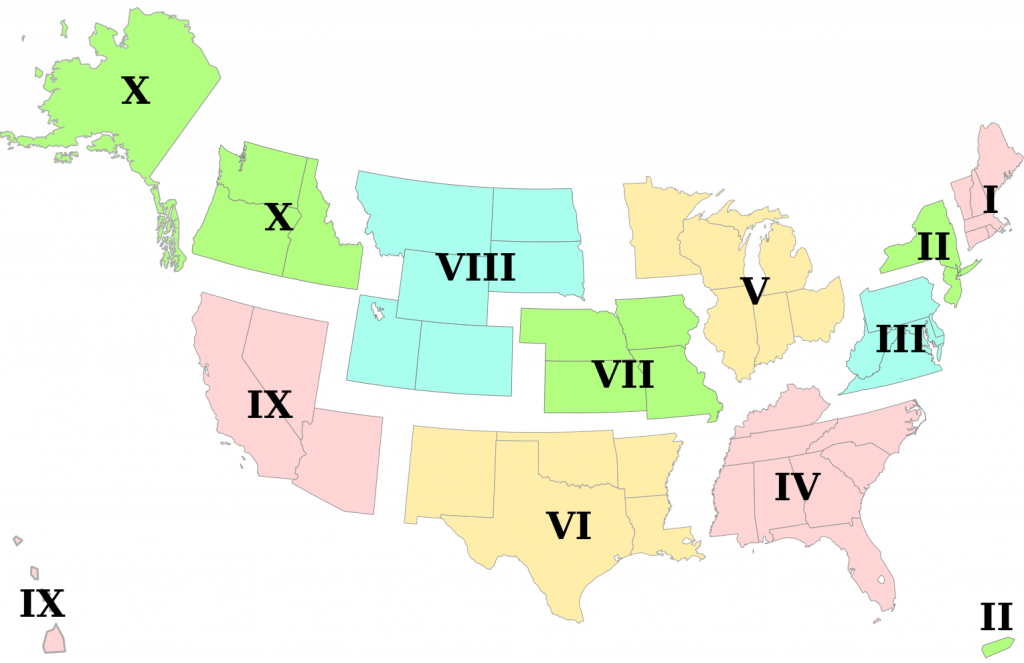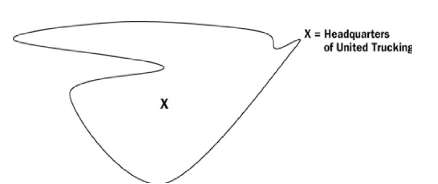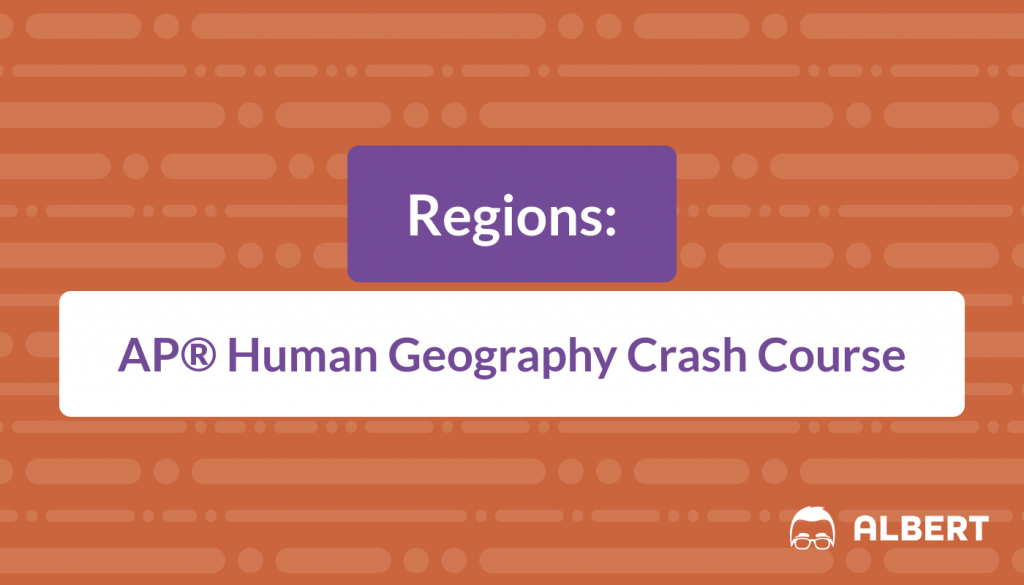Why Study Regions for the AP® Human Geography Exam?
Regions are a highly contested yet critical concept in the study of human geography and can be studied as they relate to space, place, and location. Regions allow us to generalize about a common characteristic so we can better group them. Human geography is not just concerned with describing cultural patterns, but with examining how they came about and their meaning.
For the AP® Human Geography Exam, you should look at regions as objects to investigate and explore so you can move beyond just locating and describing regions on a map. You should also think about the history of not just the country, but the people who live there now and those who migrated from other places. That research will reveal much about that region and the evolving nature of the planet in which we live.
In this AP® Human Geography study guide, we will define region as it applies to geography, examine regions as one of the five themes of geography, and identify examples of the three different types of regions. We will wrap up with what you can expect on the AP® Human Geography Exam on the topic of regions. Before we can study the concept of regions, you need to know where regions fall in the study of geography.
Five Themes of Geography
A study of geography does not only involve knowing where to find a variety of people and places on a map. It is just as important for you, as a geographer, to understand why you find those people in that particular place, and how those places influence their lives, their neighbor’s lives, and your life. You can use the five themes of geography as a way to understand geographic information so you can better appreciate cultural and environmental changes around the world.
The five themes of geography are:
- Location
- Human/environmental interactions
- Regions
- Place
- Movement
A region is an area on the earth identified by two common characteristics: physical and political geography. Physical regions are features such as deserts, mountains, and lakes. Human-kind defines political regions by establishing political boundaries like the borders of countries.
Why are Regions Important to Human Geographers?

In geography, a region is a part of the planet characterized by a level of similarity based on certain features. Regions are areas that share both human and physical characteristics. A region is what links places together using any factor that you, as the human geographer, choose. Those factors are common traits such as culture, political system, religious beliefs, language or physical features. Regions can be mapped and studied. Where historians group events in an era as “periods”, geographers group areas spatially into “regions”.
The AP® Human Geography Course Description requires you to analyze various forms of spatial data then engage in map interpretation and analysis. This AP® Human Geography study guide on regions will help you understand that regions are defined by one or more unifying characteristics such as the corn belt, or on patterns of activity like hinterlands and ports. To help you focus your study of world regions, the AP® Human Geography Course Description provides you with reference maps on page 16 that identify world regions and their boundaries.
Regions of the world can and do overlap such as the areas of Southeast Asia and Asia. Regions also have transitional boundaries like between North Africa and Sub-Saharan Africa. Some regions are based on culture (language or religion), while physical geography defines others. There is not total agreement, however, among geographers on how all regions are defined. One geographer may place Chad in the region of North Africa, and another would classify Chad as part of Central Africa. Geographers will also use two different terms to describe the same area; the Middle East and Southwest Asia, for example.
What are the Different Types of Regions?
Now that we know that a region is an area that shares both human and physical characteristics, let’s look at the three types of regions in geography. Formal, functional and perceptual regions comprise the three classifications of regions used to organize complex ideas into simpler divisions. These three types of regions are of interest to geographers, engineers, and cartographers.
Formal (Uniform) Region
A formal region is an area with a high level of consistency in a certain cultural or physical attribute. Formal regions are uniform or homogeneous areas where everyone in that region shares common attributes or traits like language, climate or political system. Formal regions are primarily used to determine and outline political, cultural and economic regions. It also can be described as any geographic location with clearly delineated boundaries whose area is established, and there is no disagreement over the area a formal region occupies.
Examples of formal regions are varied. A formal region could be any country in the world, like the United States, or the linguistic region of a state. Specific examples that you may see on the AP® Human Geography exam could be: the French-speaking region of Canada, the dairying region of North America, or political boundaries demarcating nations and states.
Functional (Nodal) Region
A functional region in geography is an area centered on a node, focal point, or central hub surrounded by interconnecting linkages. The primary node in a functional region features surrounding areas with common social, political, or economic purposes that relate to trade, communications, or transportation. In other words, a functional region has a certain set of activities or interactions that happen within it, organized around a center node or focal point. The primary node also has a sphere of economic and social influence that is less noticeable in areas more removed from it.
A functional region, for example, can be a territory that is organized around something central, such as a city. The distribution of its services is limited to a certain area, which is its functional or main nodal region. Other examples of a functional region could be the Bank of America or FedEx.
Perceptual (Vernacular) Region
A perceptual or vernacular region is defined by feelings and prejudices that may or may not be true. It can also be an idea of a person’s mental map. It can be viewed as how people think about or perceive a region based on factors that may not reflect the truth, such as the Bible Belt or Hillbilly region. When labeling perceptual regions, there are common assumptions made about the place or people.
For example, if you say, “this town is living in the past, and there are no job opportunities” it points to a perceptual region. Another person could see the same place entirely differently. They could say, “there are chances for growth, and new business opportunities in this town”. A perceptual region does not exist in the literal sense, and the region it inhabits is not explicitly defined. Geographers often differ on the location of a given perceptual region, it is dependent entirely upon personal perspective and based on opinion rather than fact. Perceptual regions may, in some cases, contradict facts or regions developed by geographers.
What do you think of when you hear the phrase “Little Italy”? What words, phrases or mental images come to mind? How you perceive that phrase helps you understand perceptual regions.
Regions and the AP® Human Geography Exam
This AP® Human Geography study guide has better prepared you to master this topic on the exam and to get you into that exam mindset. The FRQs will require you to write small essays on topics like regions. A FRQ would most likely have you list the types of regions, define them, and give examples of each of them. This study guide has given you some examples of the three types of regions, but it may help you more if you come up with some examples of your own that relate to where you live and from your personal perspective.
Here are two questions on regions from an AP® Human Geography Practice Exam.
FRQ from an AP® Human Geography Practice Exam
FRQ 3: The region is a highly contested yet critical concept in the study of human geography. What is a region and why is it important to human geographers? List three types of regions, define them and list an example of each.
Sample Answer: A region is what links places together using any parameter the geographer chooses. Three types of regions are formal, vernacular, and functional. Formal regions are uniform. Everyone shares in common one or more distinctive characteristic. An example would be the Mid West being considered the Corn Belt because corn is their distinctive characteristic. Vernacular regions are perceptual. They are a place that people believe exists as part of their cultural identity. An example would be people thinking of sweet tea when they think of “the South”. Functional regions are nodal. They are an area organized around a focal point. They are tied to that central point by transportation, economics, or communication systems. An example would be the area of Tampa that receives the Tampa Tribune.
Multiple Choice Question from an AP® Human Geography Practice Test

The region outlined above contains delivery destinations served by United Trucking. Which of the following classifications best fits this region?
A. Functional
B. Formal
C. Vernacular
D. Mental
E.Perceptual
Correct Answer:
(A) A functional region consists of a node and the places linked to that central point through some sort of movement. In this case the region is created by the movement of United Trucking’s services to customers in the places within the boundaries shown in the diagram. (B) describes a place with a uniform trait, such as language, present throughout the area. (C), (D), and (E) describe regions like the Bible Belt or the South in the United States—regions with boundaries marked by people’s ideas rather than overtly measurable characteristics.
Wrapping up Regions
To wrap up this AP® Human Geography study guide, we learned that regions allow us to generalize about a common characteristic so we can better group them. We are not just concerned with describing cultural patterns, but with examining how they came about and their meaning. A region is an area that shares both human and physical characteristics, and is classified in geography as three types: formal, functional and perceptual. How else are you studying for the AP® Human Geography Exam? Here is a great resource to help you prepare for the exam: How to Study for AP® Human Geography.
Let’s put everything into practice. Try this AP® Human Geography practice question:
Looking for more AP® Human Geography practice?
Check out our other articles on AP Human Geography.
You can also find thousands of practice questions on Albert.io. Albert.io lets you customize your learning experience to target practice where you need the most help. We’ll give you challenging practice questions to help you achieve mastery in AP® Human Geography.
Start practicing here.
Are you a teacher or administrator interested in boosting AP® Human Geography student outcomes?
Learn more about our school licenses here.









